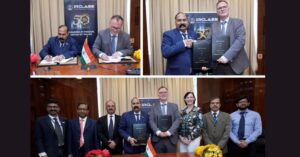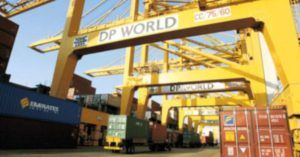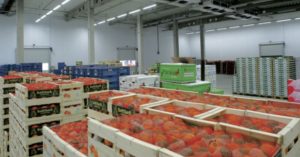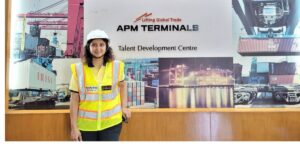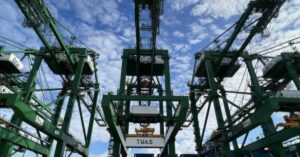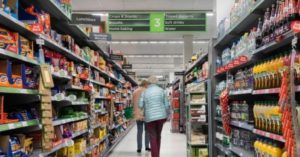Your company is very young, just two years old, can you quickly walk us through why did you choose on artificial intelligence and what is it at ATAI about?
Just to give an update, when we were working on Invecas we were working on a big project, on autonomous driving and the biggest thing about autonomous driving is everything has to be real time. All the reactions, actions, understanding should be done in 0.1 to millisecond. So, that means an edge server on an edge device had to be created to be able to provide that type of intelligence. When we were working on that, idea came…why can’t we provide these same solutions for multiple other industries and that’s when we started looking at the various industries, and one thing we realized even before Covid came in, but with Covid it gave a recognition throughout the world, supply chain and logistics do not stop no matter what comes, and how can we support that industry? Perishable goods moved from place to place in less than a day or two, but if you look at two centuries ago, if you wanted to travel across the world, it would take couple of months. Today within less than a day we are able to do it but how can goods also move that way? How can perishables like FMCG markets and different markets benefit from it? So that’s how we came to existence looking at how to supply this operation intelligence using artificial intelligence and give that approach to different industries.
Artificial intelligence is a buzzword and we started using it in everyday jargon as well. I think even a common user also experiences this while using his mobile or television. At the backend, artificial intelligence works, but what is so specific about this artificial intelligence at your company?
Specifically talking about the maritime industry, when we are talking about container management, knowing the right location at the right time in real time, how many goods are coming in, how many containers are coming in, what types of goods are flowing from where to where? Earlier all this intelligence was generated by tracking data – we had to note it and then an analyst would analyse it. AI will give you this analysis in real time and also the right way to use this information in real time, which means we are capturing the right data points..like for example, we are doing the health survey, which normally takes around 3 to 5 minutes including the gating process, we do it in less than 15 seconds, it is between 10 to 15 seconds today. This is done at the gate, at the quay crane, it is done while it is unloading. At the rail, on the rakes, it is done while it is coming in. So, your time for handling is very less and the biggest thing about artificial intelligence today; it’s what we are talking about, evidence-based systems, that is what AI or computer vision or any other sensor-based artificial intelligence is able to provide, that is what we are trying to do at ATAI.
In the last 2 years, you must have interacted with industry, studied a lot and then designed your product or services based on the current challenges that India is facing in terms of the container tracking and other operations. What was the journey and is the product or services ready to roll out?
It was very very different because we have never spent time coming from a semiconductor background, I have never done but due to our fortune, we were able to work with an established port and a couple of ICDs which helped us to understand the business knowledge in the domain and we could come out with various products for the complete cycle of container management, bulk management, and warehouse management. So, these are the three things we have come out predominantly with, out of which we have developed 20 different products where we are able to give dynamic or smart analysis for all our customers today.
As I mentioned earlier, now lot of these ports including government-owned ports, private ports and ICDs are looking at the solution and I think as you have mentioned, Covid-19 has accelerated the adoption to technology; everybody is after using technological solutions for their operational efficiency. So, on one side you have these opportunities. At the same time, I don’t think you are the only company which is into container tracking, so there must be other competitors as well in the market. So, how do you look at these opportunities and the challenge of competing with others in the marketplace or there could be some international players as well. So, where are you?
I always say it’s good to have competition in technology. That makes us and pushes us to grow further. The biggest differentiator I think, we are trying to compete with the international market. There are a lot of players out there who have container management solutions and bulk management solutions, but they are very expensive. It is unheard of or unaffordable for the type of countries or the developing countries that are coming forward for these type of solutions. So, at ATAI we try to give the same efficiency, if not better, at a fraction of the cost our competition is charging and that’s how we have entered into this market. The biggest pain point for most of these customers today is, especially in the supply chain is, upfront Capex. They have to spend tons and tons of money for them to able to bring out these solutions and they are long lasting, they don’t know how long it will take for them to get the ROI. At ATAI we want our customers to succeed, that’s the main priority. We have built a model, an innovative pricing model where we bear in some of the Capex and we make sure we walk with them throughout the path, that’s how we have structured our business models.
Container journey starts from a far off place, from China and to the other end of the world, United States or Europe and across multiple stakeholders are involved in that journey. So, there could be already lot of these IT solutions, products being used in these operations. So, is your solution standalone or it can plug-in to the existing solutions?
Our biggest IP or USP as a company is our solutions are completely integrated solution. That means, right from a freight forwarder, port operator, terminal operator to a vessel operator, CHA agent and Customs, everyone gets the information that is needed from our application/product, and that was the key thing that we believed at ATAI. This is not a product that we built and say it gets plugged in there. We try to address the solution around the problem. The problem is how do we understand each of these players? Each of these users need to understand the container health or the container location or the container where it has been? So, how do we provide the real information or the real-time information to each of these users? Again integrating AI using blockchain and giving them the right information, that’s where I think it’s somewhat unique in what we are trying to.
In your journey of 2 years, I think almost 9 months have been taken away by Covid-19, so did it affect you in any way in your plans to roll out?
Roll out was a big hit but one of the biggest things I can say is Covid-19 brought about a lot of realization among many people that such type of digitization and technology is required for us to progress or grow. Today the biggest competition is the economics of the world and how we can play a part in India becoming more efficient in handling more goods and moving more of the supply chain was our goal and that’s what made us thinking and working towards it.
ATAI will be limiting itself to maritime solutions or you look beyond this vertical?
Today what we have been doing is supply chain management which is through road, rail, air. We are working with different industries, from retail to industrial manufacturing to railroads and these are all parts where we are helping them with their supply chain and logistics.
What is the vision that you have for the company? What exactly is your way forward?
At ATAI our goal is to give the best and the smartest and the most efficient solutions for supply chain and logistics.



